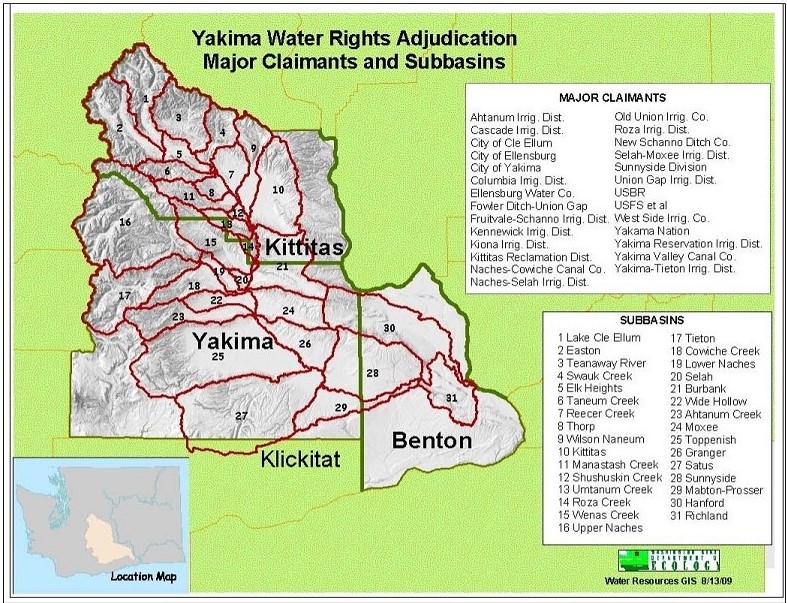Water From a Glacier Reaches the Ocean Eventually: Final Decree Issued in the Yakima Water Adjudication after 42 Years
The longest-running (and, for most of its history, the only) water adjudication in Washington State has come to an end. On May 9, 2019, Yakima Superior Court Judge James F. Gavin entered the Final Decree in Department of Ecology v. James Acquavella et al. This 42-year-old case, originally filed in 1977, adjudicated more than 4,000 claims to surface water in the Yakima basin across 31 watersheds. The water rights in 30 of these watersheds, termed “subbasins,” were fully adjudicated in Conditional Final Orders issued over a decade ago, save for one watershed–– Subbasin 23.
In Subbasin 23, the Yakama Nation and the United States clashed with the Ahtanum Irrigation District and the John Cox Ditch Company over the amount of water that would be sufficient to irrigate available acreage on the Yakama Reservation. That issue went to the Washington Supreme Court in In re Yakima River Drainage Basin, 177 Wash. 2d 299 (2013). The Supreme Court remanded the quantification issue to the trial court, resulting in additional proceedings. With the Final Decree, Judge Gavin also entered the Amended Conditional Final Order in Subbasin 23, finally adjudicating all 31 subbasins.

Map from the Department of Ecology's website.
Moving forward, Ecology will have primary authority for the administration of the Final Decree and the adjudicated water rights, with appeals of Ecology’s decisions going to the Pollution Control Hearings Board, not to the Yakima Superior Court. The court has retained authority to resolve disputes regarding the quantification of the Yakama Nation’s treaty-based instream flow right for fish and to enjoin water users from using water in a way that is contrary to the Final Decree.
It remains to see whether this river has truly run its course, as appeals can be filed until July 8, 2019.
Beveridge & Diamond’s Water practice group develops creative, strategically tailored solutions to challenges that arise under the nation’s water laws. The firm’s attorneys have represented clients in a range of industries in project planning as well as in litigation and enforcement proceedings on issues arising from the growing convergence of water supply, use, and quality issues. For more information, please contact the author.









